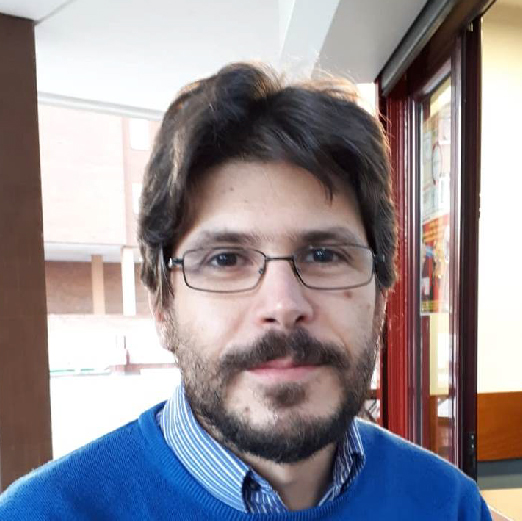
Raúl García Rodríguez
| AREA | RESEARCH GROUP | INSTITUTE |
|---|---|---|
| Inorganic Chemistry | GIR MIOMeT | IU CINQUIMA |
I studied Chemistry at UVa, where I also did my PhD Thesis. My thesis, entitled 'Carbon-carbon coupling and functionalization of amino acids and peptides in complexes with iminopyridine ligands and group 6 and 7 metals', was supervised by Daniel Miguel and Celedonio Álvarez. In 2010, thanks to a postdoctoral fellowship from the Ramón Areces Foundation, I was able to investigate the synthesis and properties of semiconductor nanocrystals at the University of Pittsburgh (USA), in the group of Prof. Haitao Liu. There I spent three years, tackling multidisciplinary problems, such as the mechanisms that lead to the formation of semiconducting nanocrystals, mainly CdSe. By facing these systems I discovered the importance of approaching a multidisciplinary problem from another perspective. Subsequently, I was lucky enough to obtain a Marie Curie IEF fellowship to work in Prof. Dominic Wright's group at the University of Cambridge (UK), where I spent three and a half years. At Cambridge, not only did I face different synthetic challenges within the broad umbrella of representative element chemistry, but I was also able to develop another of my passions: teaching. There I learned that much can be learned from the innate curiosity of students. In 2017 I obtained a Ramón y Cajal contract that allowed me to return to the University of Valladolid.
I consider myself a synthetic chemist with a great curiosity, which has allowed me to face diverse challenges: from Organometallic Chemistry to Materials Chemistry. One of the main areas of my research is the synthesis and design of ligands, in particular, those based on metallic or semi-metallic representative elements with easily modulated structures. Recently we have prepared tris-pyridine compounds where the introduction of metallic character elements allows the introduction of unusual reactivities in the ligand. These systems present a wide variety of potential applications including, in addition to catalysis, anion recognition, chirality determination, as well as applications in supramolecular chemistry. The use of tris-pyridine systems as building blocks allows the construction of different supramolecular architectures, such as macrocycles, MOFs or molecular capsules, whose characteristics can be easily manipulated through the metallic or semi-metallic element used in the construction of the ligand. Another area we are exploring is coordination and host-guest chemistry aimed at establishing supramolecular interactions with fullerenes.
My view is that curiosity is the main driver in research and development. I think it is very important to be curious and to satisfy your own curiosity. My research is fundamentally motivated by curiosity: Why...? Could...? Sometimes this curiosity can take very simple forms, but often the simplest questions can open the door to important discoveries. For example, the simple act of exploring an unusual reactivity can lead to unexpected applications, as I have experienced.

